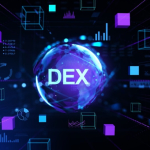As we look towards the future of digital assets in 2025, it’s clear that the momentum gained in 2024 will continue to shape the landscape of cryptocurrency and blockchain technology. A key highlight from last year was the introduction of Bitcoin exchange-traded funds (ETFs), which fueled institutional adoption and set the stage for a more dynamic digital asset ecosystem. This surge in participation emphasizes the growing need for secure and efficient custody solutions to safeguard these valuable virtual currencies.
The digital asset custody space is evolving rapidly, driven by advances in technology, shifting regulatory frameworks, and the increasing demand for scalable solutions. Let’s explore the latest trends and innovations that are likely to define digital asset custody in 2025, laying the foundation for greater trust, accessibility, and widespread use.
Institutional Adoption of Digital Assets
More and more institutional investors are turning to digital assets, including cryptocurrencies and tokenized real-world assets (RWAs). A recent survey from 2024 revealed that 42% of institutions had increased their digital holdings, reflecting a deeper commitment to the sector. The participation of hedge funds is also on the rise, with approximately half of them now investing in cryptocurrencies—a significant increase from just 29% the year before. Furthermore, 33% of hedge funds plan to increase their crypto investments, further highlighting the growing need for custody solutions that can manage diverse portfolios efficiently.
As institutional adoption continues to expand, the demand for custody solutions that offer robust security, compliance, and operational efficiency will only intensify.
The Emergence of Multi-Asset Custody Platforms
With the expanding array of digital assets—from cryptocurrencies to NFTs, stablecoins, and even Central Bank Digital Currencies (CBDCs)—the need for custody solutions that can manage multiple asset types has become more apparent. By 2025, multi-asset custody platforms are expected to become standard, enabling institutions to manage their digital holdings more effectively with increased oversight.
Why Multi-Asset Platforms Matter
- Support for tokenized and real-world assets (RWAs)
- Integration with decentralized finance (DeFi) platforms and decentralized applications (dApps)
- Cross-chain interoperability for asset management across different blockchains
As tokenized financial instruments such as bonds and equities continue to gain traction, the need for custody solutions that seamlessly bridge traditional finance and blockchain technology will become more critical.
Advancing Security Measures
As digital asset custody solutions evolve, staying ahead of security threats is a top priority. In 2025, new technologies will ensure that custodians can protect assets from cyber threats more effectively. Some of the most notable advancements include:
- Multi-Party Computation (MPC): A technique that divides private keys into several shares, each stored in different locations, ensuring no single point of vulnerability.
- Post-Quantum Cryptography (PQC): A future-proof approach designed to counter the potential risks posed by quantum computing.
- AI for Threat Detection: By leveraging artificial intelligence, institutions can monitor transactions, identify anomalies, and respond to risks in real time.
These innovations are essential to enhancing the security of digital asset custody solutions and safeguarding the assets of institutional clients.
Integrating with DeFi and Web3
Decentralized finance (DeFi) and Web3 technologies are rapidly changing how financial services are delivered. In 2025, we can expect custody solutions to integrate seamlessly with these ecosystems, offering secure access for institutional investors. Key features will include:
- DeFi Staking Integration: Allowing institutions to stake their assets directly through custody platforms.
- NFT Custody: As NFTs become more valuable, secure storage solutions for these assets will be vital.
- Wallet Interoperability: Enabling smooth interaction with Web3 decentralized applications (dApps), while maintaining high security standards.
With more institutions eager to engage with DeFi and Web3, demand for custody solutions that offer secure access to these ecosystems is set to rise.
Navigating the Regulatory Landscape
The regulatory environment surrounding digital assets is evolving quickly. By 2025, custody providers will focus more heavily on ensuring compliance with both regional and global regulations. Some key developments to watch include:
- Licensing frameworks for digital asset custodians in regions like the UAE, Singapore, and the European Union.
- Enhanced Anti-Money Laundering (AML) and Know Your Customer (KYC) protocols tailored to institutional clients.
- Growing demand for certifications like SOC 2 and ISO 27001 to demonstrate security and operational excellence.
As institutional investors prioritize regulatory compliance, they will increasingly choose custodians with a proven track record of adhering to these standards, thereby reducing risks and fostering trust.
The Rise of Tokenization and Real-World Asset Custody
Tokenization allows for fractional ownership of traditional assets such as real estate, art, and commodities. By 2025, custody providers will be ready to accommodate the growing demand for secure management of tokenized real-world assets (RWAs). This trend is set to have a significant impact on the market by:
- Enhancing security for tokenized assets and facilitating their seamless management.
- Integrating with trading platforms to allow easy transactions and settlements of RWAs.
- Improving governance tools for tokenized securities.
As tokenization continues to blur the lines between traditional finance and blockchain technology, the secure custody of tokenized RWAs will attract more institutional investors.
Automation and AI-Driven Efficiency
The integration of automation and AI is transforming the future of digital asset custody. By leveraging these technologies, institutions can streamline operations while maintaining high security standards. Some key innovations include:
- Smart Contract Auditing: Automatically checking the security of smart contracts before accepting custody of related assets.
- Automated Compliance: AI-based systems to ensure continuous adherence to regulatory requirements.
- Real-Time Transaction Monitoring: Using machine learning to detect suspicious activities quickly.
Automation not only improves operational efficiency but also reduces costs, allowing institutions to focus on their long-term goals rather than day-to-day management.
The Role of Insurance in Custody Solutions
As institutional portfolios grow, so does the need for insurance-backed custody solutions. In 2025, custodians will offer expanded insurance coverage to protect against risks such as theft, hacking, and operational failures. This will include:
- Wider insurance coverage designed to cover a broader range of risks.
- Increased insurance limits to accommodate institutional clients managing billions in assets.
- Partnerships with global insurance providers to create tailored policies for digital assets.
Insurance-backed custody solutions will provide an added layer of protection, enhancing trust and confidence in the security of digital asset holdings.
Focusing on User Experience
User experience (UX) is becoming a critical factor even for institutional custody platforms. In 2025, the focus will shift towards creating intuitive, feature-rich platforms that can serve both technical and non-technical users. Features are expected to include:
- Real-time portfolio dashboards to track asset performance.
- Role-based access controls to improve governance.
- Mobile apps to manage assets on the go.
A user-friendly interface will simplify adoption, reduce operational challenges, and ensure that institutional teams can easily navigate their custody solutions.
Sustainable Custody Solutions
As environmental, social, and governance (ESG) factors become more important to investors, the demand for eco-friendly custody solutions will increase. By 2025, custodians are likely to adopt:
- Energy-efficient solutions powered by renewable energy sources.
- A focus on proof-of-stake (PoS) assets instead of proof-of-work (PoW), which consumes more energy.
- Sustainable governance practices within custody operations.
Custody providers that align with sustainability goals will stand out, attracting institutions that prioritize eco-friendly investments.
Conclusion
In 2025, the digital asset custody landscape will be defined by innovation, security, and adaptability. As tokenization, DeFi, and institutional adoption gain traction, the need for cutting-edge, secure, and user-friendly custody solutions will grow. The custodians that successfully integrate advanced technologies, ensure compliance, and provide intuitive platforms will be well-positioned to meet the evolving demands of the digital asset ecosystem. Institutions must carefully choose custody partners to navigate the exciting opportunities and challenges of this rapidly transforming space.













